Did Johnson & Jonson, a veteran sustainability reporter with 17 years of reporting experience, change the game with its first G4 report? This post continues my analysis of what changed with G4, this time using Johnson & Johnson reports over three years.
For an overview of what all this means, see this post.
For a G4 game-changer analysis of Fiat Group, see this post.
For a G4 game-changer analysis of Ahlstrom, see this post.
Johnson&Johnson
2013 Citizenship and Sustainability Report: G4 Core, 118 pages
2012 Citizenship and Sustainability Report: GRI G3, Level A, 88 pages
2011 Responsibility Report: GRI G3, Level B, 82 pages
Materiality - drives the report or just for show
J&J has delivered a very detailed G4 report, 20+ pages longer than prior reports, and with more Performance Indicators than prior reports (80 in 2013, 65 in 2012). This is perhaps not surprising when you consider that J&J identified 41 material issues for its 2013 report, narrowed down from a master list of 220 issues that the company developed. In 2012 and 2011, the list of issues reported was based on a 2010 materiality analysis in 2010 that identified 12 broad issues.
 |
| 2013 material issues |
The very high priority issues are in the left-hand column and reporting covers these in some detail, usually several pages. The lower priority issues are covered in less detail in the report. Biodiversity, for example, ranks among the lesser important material topics, is covered in less than a page in the report. Product Quality and Safety, the most important issue, gets several pages. However, this is not entirely consistent. Three of the least important issues - philanthropy, community investment and volunteerism have around 5 pages of content. But then, everyone likes to brag about donating to the community.
The structure of the 2013 report follows the material issues grouped into 3 categories: advancing health, doing business responsibly and safeguarding the planet. All 41 issues are included in separate sections in one of these three groupings. That makes for a rather fragmented report and it is hard for the reader to focus on whats most important - the left hand column. This is not too dissimilar from prior J&J reports where the main section was entitled "Our Material Issues" and contained several chapters and sub-chapters.
Johnson & Johnson has delivered a report in 2013 that is definitely materiality-oriented and built around the identified material issues. However, the report also includes the not-most important issues. This is similar to the reports of the past two years. Therefore, G4 doesn't appear to have been a significant game changer for J&J. J&J changed the game ahead of the game by reporting with a materiality focus well before G4 publication, something which many companies did not do. But in moving to G4, the focus has been diluted a little and the urge to report more than G4 requires is in evidence.
The content lists for each chapter are long and do not differentiate between the most important issues and the least important issues. There are 14 issues that are noted as "extremely high" priority. In the chapter on Advancing Human Health, there are 7 sections, Leading Business Responsibly, 23 sections, and Safeguarding the Planet, 9 sections. The 14 extremely high important issues are all included as the first sections in each chapter. But so are all the rest.
There is some G4 logic in this presentation, but I had to spend quite a lot of time working this out.It took me a while to realize that the most important issues were the first chapters in each section. I feel that these issues could/should have been more effectively differentiated in a G4 report. In a sense, we cannot fault J&J for being attentive to a broad range of stakeholder needs. However, a bolder focus on the really important issues would give bigger impact and make this report more appealing and digestible. Reconsideration of the structure of this report might enable the reader to get to the critical parts more quickly, and use of the GRI Index, or an Appendix, or the company website could be options for disclosure of the less important issues for those stakeholders who require this additional information.
Engagement - process or lip-service
I feel the stakeholder engagement process described in the J&J report was rather corner-cutting. It's hard to tell whether the process was a little under-cooked or whether the reporting of it was modest. J&J describes a new materiality process, the first since 2010. The mechanics are clear. Develop a broad range of issues, narrow them down and prioritize them using internal and external feedback. For external stakeholders, Johnson&Johnson "identified a group of external stakeholders primarily
focused on corporate responsibility and asked them to
rank the topics for overall importance of the topic and
importance for Johnson &Johnson to address." It's not clear who this group is, how large it is, nor what kind of feedback the group gave. G4-27 specifically requires companies to state which stakeholders raised which topics.
J&J did not do this, listing issues in their final prioritized form. This is an area where I believe J&J hasn't changed the game in G4 - or at least - if it has, reporting of stakeholder engagement is weak.
J&J did not do this, listing issues in their final prioritized form. This is an area where I believe J&J hasn't changed the game in G4 - or at least - if it has, reporting of stakeholder engagement is weak.
Integrity - shapes up or misleads
This report is in accordance at core level but reports on far more general disclosures and Performance Indicators than are required at core level. J&J indicates Performance Indicators with labels throughout the report, making it very easy to find disclosures. (In fact, the J&J report PDF is super-navigable, totally hyper-linked and very easy to work through). In general, I found J&J's reporting to be quite meticulous, and several awkward disclosures which many companies never get right are carefully presented in this report. However, something fell through the cracks. Take for example G4-LA3. G4-LA3 is pretty prescriptive.
J&J confirm having reported G4-LA3, saying the disclosure is both in the report and online.
I couldn't find any relevant information online, and in the report, this is the G4-LA3 disclosure.J&J confirm having reported G4-LA3, saying the disclosure is both in the report and online.
As you may have realized, the disclosure bears no resemblance to the disclosure requirement. It is difficult to report with integrity and many times, inconsistencies are often inevitable. It's better to publish a great report like this one from J&J with a little blip here and there than not to report at all. However, there is something about robust quality checking in reporting by people that truly understand reporting frameworks that should not be underestimated. Getting everything in sync is no easy task.
Impact - what we did or what difference we made
J&J has an impressive range of Healthy Future 2015 goals and reports progress against each. Many of these are outcome oriented in one way or another. For example, "approximately 75 percent of strategic
suppliers have two or more publicly reported
sustainability goals" is an outcome of having embedded sustainability processes in the extended supply chain. While a deeper outcome might be to calculate the benefits that suppliers gained through reported sustainability goals, this interim outcome is, for me, a good indicator of impact. It's not "we trained our suppliers" and it's not "our suppliers signed our Code of Conduct". It's a behavioral change by suppliers. I think that's great. Another example: "46 percent [of employees] have completed a health risk
assessment and know their key health
indicators". Again, this is evidence of a positive impact on employee behavior. There are many more examples. This is good G4 practice, but for J&J, it's not so much of a game-changer because it's what J&J has been doing for some years. But it's still good to see.
Game-changer - does or doesn't?
I give this report a 65% game-changer rating, the highest of the three so far (Fiat 58%, Ahlstrom 54%). This rating is more about meeting expectations of a G4 report than about a total transformation of the reporting approach, because J&J was already reporting though a materiality lens in the past. However, as a report to emulate in our G4 landscape, it's the best of those I have analyzed so far. But, it could be better :)
Material issues -85%
Focus - 65%
Stakeholder Engagement - 40%
Integrity - 65%
Doing or impacting - 70%
This completes the first three G4 game-changer analyses. Stay tuned for more perspectives on how G4 is changing the game. Or not.
elaine cohen, CSR consultant, Sustainability Reporter, HR Professional, Ice Cream Addict. Author of Understanding G4: the Concise guide to Next Generation Sustainability Reporting AND Sustainability Reporting for SMEs: Competitive Advantage Through Transparency AND CSR for HR: A necessary partnership for advancing responsible business practices . Contact me via www.twitter.com/elainecohen or via my business website www.b-yond.biz (Beyond Business Ltd, an inspired CSR consulting and Sustainability Reporting firm)











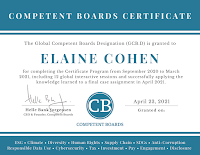


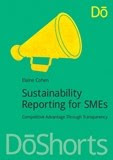
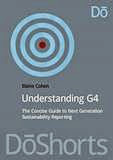
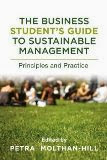
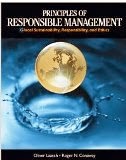
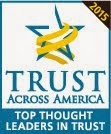










No comments:
Post a Comment